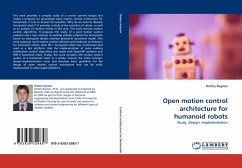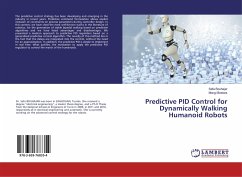This work deals with the stability analysis of two legged (humanoid) robots during walking. This research area is characterized by the fact that there are a lots of publications, most of which are based on the classic Zero-Moment-Point (ZMP) method. First, a brief overview is provided on humanoid robots, and also models for the dynamic behavior are discussed. As base for these models these two methods Denavit-Hartenberg and the Newton-Euler are used. Main aim of this work is to investigate the stability of a biped robot developed from IHRT. There is currently the low base of robot - consisting of feet, legs, hips and upper part of robots body. This structure currently has eleven degrees of freedom. In the final stage, the robot should have thirty-one degrees of freedom. Based on constructions drawings it was necessary to determine the mechanical parameters of the upper body of biped robot. First, the existing low base of robot was simulated using Matlab / SimMechanics, where the derived by Newton-Euler model was used. From the resulting step trajectories followed that stabilization was only possible for a step height of more than 5 cm in optimal conditions.








